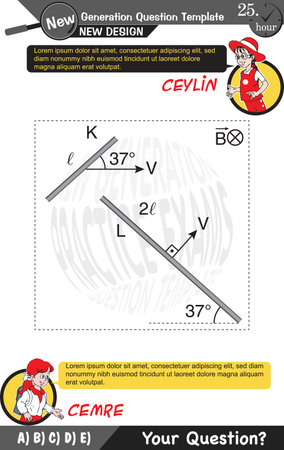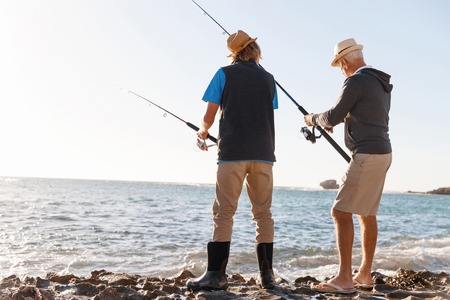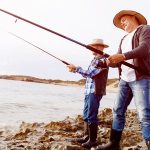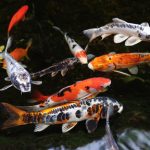1. Spring Kayak Fishing Gear Essentials
When spring rolls around, kayak anglers need to gear up for unpredictable weather, fluctuating water temperatures, and changing fish behavior. Having the right equipment not only boosts your chances of landing a catch but also keeps you safe and comfortable on the water.
Season-Appropriate Apparel
Spring weather can be all over the place—sunny one minute and chilly the next. Staying dry and warm is key. Heres what to wear:
| Apparel | Description |
|---|---|
| Drysuit or Wetsuit | Essential for cold water safety; helps prevent hypothermia if you fall in. |
| Layered Clothing | Moisture-wicking base layers, fleece mid-layers, and waterproof outer shells work best. |
| Waterproof Footwear | Neoprene boots or water shoes with good grip keep feet warm and steady on wet surfaces. |
| PFD (Personal Flotation Device) | A coast guard-approved life vest designed for kayak fishing is non-negotiable. |
Rods and Reels for Spring Conditions
Spring often means variable fish behavior due to spawning cycles and shifting water temps. A medium-action spinning rod paired with a quality spinning reel gives you flexibility for different species like bass, crappie, and trout. Consider bringing a backup setup in case conditions change.
Tackle Tips for Spring Fishing
Your spring tackle box should include lures that mimic baitfish or crawfish, which are common prey during this time of year. Bright-colored baits can also trigger strikes in stained water caused by spring rains.
Recommended Lures
- Jerkbaits – Great for targeting bass in cooler waters
- Soft plastics – Versatile and effective for various freshwater species
- Spinnerbaits – Ideal for covering water quickly on windy spring days
- Spoons – Excellent flash and movement for active feeders like trout
Electronics to Enhance Your Trip
A fish finder or GPS unit can make a huge difference when youre trying to locate active fish or navigate unfamiliar waters. Look for models with side imaging and temperature sensors to help identify productive zones during early spring transitions.
Pro Tip:
If youre new to kayak fishing electronics, choose a compact, battery-efficient unit thats easy to mount and remove. Waterproofing is a must during unpredictable spring showers.
Other Must-Have Gear
- Paddle leash – Keeps your paddle secured in case of sudden movements or wind gusts
- An anchor system – Helps you stay in place when casting into specific spots
- Tackle crate or bag – Keeps your gear organized and within reach on the kayak deck
- Bungee cords or gear tracks – For securing rods, nets, and other essentials safely
Having the right gear tailored for springtime conditions will set you up for success as waters start to warm and fish become more active. In the next section, well dive into safety tips every spring kayak angler should know before hitting the water.
2. Safety Tips for Spring Kayak Anglers
Spring kayak fishing is an exciting way to enjoy the outdoors and chase early-season fish, but it also comes with unique safety concerns. The water is still cold, weather can change quickly, and youre often far from shore. Staying safe starts with knowing what to expect and being prepared.
Cold Water Precautions
Even if the air feels warm in spring, the water can still be dangerously cold. Falling in without proper gear can lead to hypothermia within minutes. Here’s how to stay protected:
| Gear | Why It Matters |
|---|---|
| Drysuit or Wetsuit | Protects your core temperature in case of immersion |
| Layered Clothing (non-cotton) | Keeps you warm and dries faster than cotton |
| Neoprene Gloves & Booties | Helps maintain dexterity and foot warmth |
Weather Awareness
Spring weather can be unpredictable—sunny one minute, stormy the next. Always check the forecast before heading out, and keep an eye on the sky while on the water.
Tips for Watching the Weather:
- Use a reliable weather app like NOAA Weather Radar or Windy
- Avoid going out if wind speeds exceed 15 mph
- Watch for sudden changes in cloud cover or wind direction—theyre signs a storm may be coming
PFD (Personal Flotation Device) Usage
Your PFD is your best friend on the water. In fact, many states require you to wear one at all times while kayaking.
Choosing the Right PFD:
- Select a Type III or Type V PFD designed for paddling or fishing
- Make sure it fits snugly but comfortably—you should be able to paddle freely
- Look for features like pockets or attachments for gear and tools
Handling Emergency Situations
If something goes wrong, having a plan can make all the difference. Whether its capsizing, getting lost, or dealing with a sudden medical issue, preparation saves lives.
Emergency Essentials to Carry:
| Item | Purpose |
|---|---|
| Whistle or Air Horn | Signals distress if youre far from others |
| Cell Phone in Waterproof Case or VHF Radio | Contact emergency services if needed |
| Tow Line or Throw Rope | Helps assist yourself or another kayaker in trouble |
| First Aid Kit | Covers basic injuries until help arrives |
Bonus Tip:
Always let someone know where youre going and when you plan to return. This simple habit can speed up rescue efforts if something goes wrong.
Kayak fishing in spring is incredibly rewarding, but being prepared with these safety tips helps ensure every trip ends as planned—with great memories and maybe even a few fish stories.

3. Seasonal Patterns and Fish Behavior
As spring settles in, water temperatures start to rise, sparking a shift in fish behavior that every kayak angler should understand. Unlike the chill of winter when fish tend to slow down and stay deep, spring triggers a feeding frenzy as fish prepare for spawning season. This change in activity opens up exciting opportunities for targeting popular freshwater species like bass, crappie, and trout from your kayak.
Understanding Spring Weather Effects
Spring weather is unpredictable — one day its sunny and warm, the next its cool and rainy. These fluctuations have a direct impact on water temperature, which is the key factor influencing where fish hang out and how actively they feed. As water gradually warms into the mid-50s to 60s (°F), many species move from deeper wintering spots toward shallower waters to spawn.
How Temperature Affects Fish Location
| Water Temperature (°F) | Fish Behavior | Best Kayak Fishing Strategy |
|---|---|---|
| 45–50°F | Fish remain sluggish; found deeper | Use slow presentations; target drop-offs |
| 51–60°F | Pre-spawn activity increases; fish move shallower | Cruise near shallow flats and coves |
| 61–70°F | Spawning begins; high activity level | Focus on shallow cover like submerged logs or weeds |
Targeting Popular Spring Species
Bass (Largemouth & Smallmouth)
Bass are a favorite among kayak anglers in spring because of their aggressive pre-spawn behavior. Largemouths often head to warmer, shallow waters while smallmouths prefer rocky flats with moderate depth. Try soft plastics like craws or stickbaits, especially around submerged timber or weed lines.
Crappie
Crappie spawn earlier than bass, often when water hits the mid-50s. They move into shallow brush piles or under docks. Light tackle with small jigs or minnows works great from a kayak since you can quietly approach their hiding spots.
Trout
If youre fishing rivers or stocked lakes, spring is prime time for trout. As insect activity picks up, trout feed more aggressively near the surface and along current seams. Use inline spinners, small spoons, or drifting live bait for best results.
Quick Tips for Spring Kayak Fishing Success:
- Monitor local water temps before heading out — even a few degrees make a difference.
- Move quietly through shallow areas to avoid spooking fish during spawn.
- Use polarized sunglasses to spot fish beds and underwater structure.
- Adjust lure size and speed based on how active the fish seem that day.
By tuning in to seasonal patterns and understanding how fish respond to changing conditions, youll be better equipped to find success on the water this spring. Whether youre chasing bass in a backwater bayou or jigging for crappie near sunken brush, knowing where and how to fish makes all the difference.
4. Top Spring Kayak Fishing Destinations in the U.S.
Spring is one of the best times to hit the water in your kayak and chase after active, hungry fish. As temperatures rise and fish begin their pre-spawn or spawning activities, many regions across the U.S. come alive with kayak fishing opportunities. Here are some of the top spring kayak fishing destinations from coast to coast that offer great conditions, scenic views, and plenty of fish.
Lake Guntersville, Alabama (Southeast)
Lake Guntersville is a bass angler’s paradise, especially in spring. Located in northern Alabama, it’s famous for its largemouth bass population. The shallow flats and grassy areas make it perfect for kayak anglers targeting big springtime bass.
- Main Species: Largemouth Bass
- Best Time: March through May
- Tips: Use soft plastics or chatterbaits near vegetation and shallow cover
Toledo Bend Reservoir, Texas/Louisiana Border (South)
This massive reservoir on the border of Texas and Louisiana consistently ranks among the top bass lakes in the country. Spring brings excellent fishing conditions as bass move into shallower waters to spawn.
- Main Species: Largemouth Bass, Crappie
- Best Time: Late February through April
- Tips: Target coves and creek arms for spawning fish
Susquehanna River, Pennsylvania (Northeast)
If you’re into river kayak fishing, the Susquehanna River offers an exciting spring bite for smallmouth bass. The river’s rocky structure and moderate flow make it ideal for paddle-powered anglers looking for action-packed days.
- Main Species: Smallmouth Bass
- Best Time: April through early June
- Tips: Use crankbaits or tube jigs around eddies and current breaks
Lake St. Clair, Michigan (Midwest)
This shallow lake between Lake Huron and Lake Erie is a smallmouth haven in the spring. Clear waters and expansive flats provide ideal conditions for spotting and targeting fish from your kayak.
- Main Species: Smallmouth Bass, Northern Pike
- Best Time: Mid-May through June
- Tips: Drop-shot rigs and jerkbaits work well in clear water conditions
Columbia River, Oregon/Washington (Pacific Northwest)
The Columbia River is a diverse fishery offering everything from smallmouth bass to spring Chinook salmon. For kayak anglers, calmer backwaters and tributaries are prime spots during spring.
- Main Species: Smallmouth Bass, Chinook Salmon, Walleye
- Best Time: March through June
- Tips: Focus on backwater bays and slow-moving sections for easier paddling and consistent bites
Quick Look: Spring Kayak Fishing Hotspots by Region
| Region | Location | Main Species | Peak Months |
|---|---|---|---|
| Southeast | Lake Guntersville, AL | Largemouth Bass | March–May |
| South | Toledo Bend Reservoir, TX/LA | Largemouth Bass, Crappie | Feb–April |
| Northeast | Susquehanna River, PA | Smallmouth Bass | April–June |
| Midwest | Lake St. Clair, MI | Smallmouth Bass, Pike | May–June |
| Pacific Northwest | Columbia River, OR/WA | Bass, Salmon, Walleye | March–June |
No matter where you live or travel in the U.S., there’s likely a spring kayak fishing hotspot nearby just waiting to be explored. With the right gear and local knowledge, these destinations can offer some of the best fishing experiences of the year.
5. Kayak Handling and Launching Techniques
Spring kayak fishing is exciting, but with changing water levels, unpredictable winds, and cold temperatures, getting your kayak in and out of the water safely takes a bit of know-how. Here are some easy-to-follow tips for handling and launching your kayak like a pro during spring.
Launching from Shore
Launching from shore is common, especially at smaller lakes or rivers without docks. Heres how to do it safely:
- Pick a Gradual Entry Point: Look for a gentle slope with firm ground — avoid muddy or rocky spots that can be slippery.
- Position Your Kayak: Place the bow (front) in the water while keeping the stern (back) on land. Sit down carefully in the seat before pushing off with your paddle or feet.
- Watch Your Footing: Spring conditions can make banks slick. Wear waterproof boots with good grip.
Launching from a Dock
Docks can be convenient but tricky if youre not used to them. Follow these steps:
- Tie Off First: If youre alone, tether your kayak loosely to the dock before getting in to prevent it from drifting away.
- Sit First, Then Push Off: Sit on the edge of the dock, place your feet in the kayak, then lower yourself in using your hands for balance. Push off gently once seated securely.
- Avoid Sudden Movements: Keep your weight centered and movements slow to avoid tipping over.
Solo Launching Tips
If youre fishing solo this spring, keep these tips in mind to make launching easier and safer:
| Solo Launch Tip | Description |
|---|---|
| Use a Paddle Leash | Keeps your paddle attached so you don’t lose it during launch or landing. |
| Load Gear First | Packing gear ahead of time reduces time spent onshore and keeps launch smoother. |
| Knee-Deep Water Entry | If possible, float the kayak in knee-deep water and step into it while holding onto a stable object like a rock or dock post. |
Navigating Strong Currents and Winds
Spring brings fast-moving water and gusty winds. Heres how to manage them when launching or landing:
- Launch Into the Wind or Current: This gives you more control right from the start instead of being pushed sideways.
- Aim for Sheltered Areas: Look for coves, inlets, or behind natural windbreaks when planning where to enter or exit the water.
- Paddle Ready Position: Always have your paddle in hand when launching — youll need it immediately for steering and stability.
- Avoid Overloading: Extra weight makes kayaks harder to control in moving water; pack only what you need.
Pro Tip:
If youre unsure about conditions, dont hesitate to scout out multiple launch points before committing. Sometimes paddling a few extra minutes from a safer location is worth avoiding risky terrain.
Your Safety Comes First
No matter how eager you are to hit those spring hotspots, taking time to launch and land properly sets up your trip for success. Practice these techniques regularly and they’ll become second nature — giving you more time to focus on reeling in that big catch!
6. Catch and Release Best Practices
Spring is a critical time for many fish species as its often their spawning season. When kayak fishing during this period, practicing ethical catch and release is essential to help preserve local fish populations and protect fragile ecosystems. Here are some simple tips to ensure your spring kayak fishing adventures are both fun and conservation-friendly.
Use the Right Gear
Using equipment designed for safe catch and release helps minimize harm to the fish. Circle hooks, barbless hooks, and rubberized landing nets reduce injury and make releasing fish easier.
| Gear | Why It Helps |
|---|---|
| Barbless Hooks | Easier to remove, causes less damage |
| Rubber Landing Net | Reduces scale loss and fin damage |
| Circle Hooks | Less likely to gut-hook fish |
Handle Fish with Care
If you plan to release your catch, minimizing stress and physical harm is key. Always wet your hands before handling fish to avoid removing their protective slime coat, which helps guard against infection. Support the fish horizontally using both hands — one under the belly and one near the tail — especially for larger species.
Quick Handling Tips:
- Keep the fish in water as much as possible
- Avoid squeezing or holding by the gills
- Use pliers or a hook remover to gently take out the hook
- If taking photos, have your camera ready beforehand for a quick shot
Proper Release Techniques
Releasing a fish properly ensures it has the best chance of survival. If the fish appears tired, revive it by facing it into the current while gently moving it back and forth until it swims away on its own. Avoid releasing fish into extremely shallow or warm water if possible.
Best Time & Place to Release:
- Avoid: Areas with heavy boat traffic or predators nearby
- Ideal: Calm, oxygen-rich water away from shore disturbances
Respect Spawning Areas
During spring, many species create nests or beds in shallow waters. Avoid casting into or disturbing these areas when sight fishing from your kayak. Give spawning fish space so they can reproduce successfully.
Signs of Spawning Beds:
- Circular cleared-out spots on sandy or gravel bottoms
- Fish hovering or guarding an area aggressively
By following these catch and release best practices during spring kayak fishing trips, youre helping ensure healthy fisheries for future generations while enjoying one of Americas favorite outdoor pastimes.


